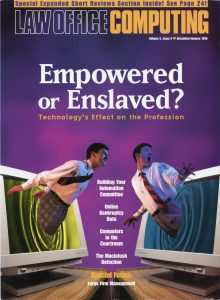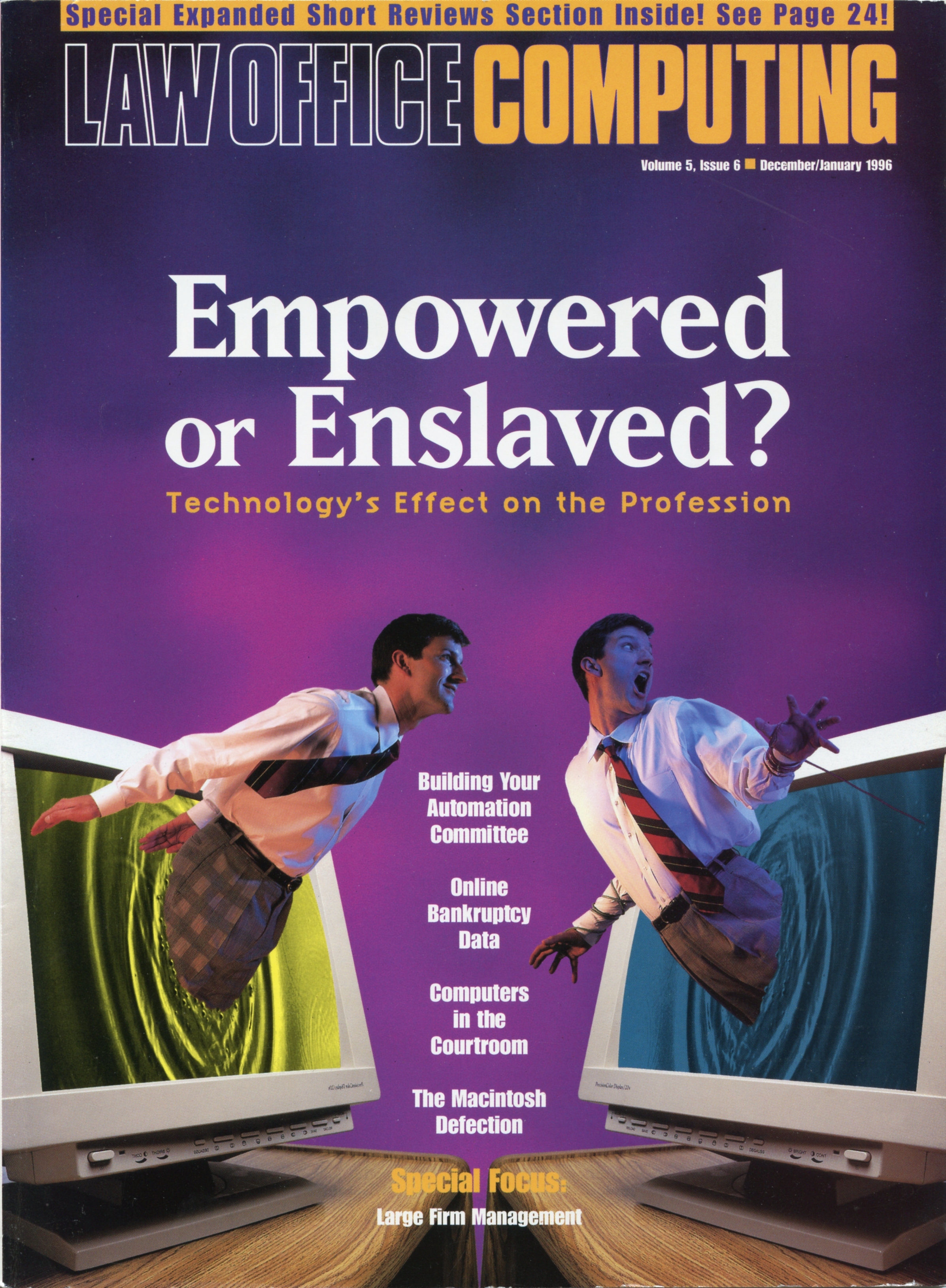 In thinking about my presentation next week for the ACLEA annual meeting about “How Technology is Changing the Practice of Law … and CLE,” I suddenly remembered that I had once written a magazine article on this very topic. Way back in 1995, I wrote, Empowered or Enslaved: Technology’s Effect on the Legal Profession (PDF), the cover story for the December 1995/January 1996 issue of the magazine Law Office Computing.
In thinking about my presentation next week for the ACLEA annual meeting about “How Technology is Changing the Practice of Law … and CLE,” I suddenly remembered that I had once written a magazine article on this very topic. Way back in 1995, I wrote, Empowered or Enslaved: Technology’s Effect on the Legal Profession (PDF), the cover story for the December 1995/January 1996 issue of the magazine Law Office Computing.
On one hand, the article reads like a time capsule. For example, one lawyer I interviewed as an Internet success story was Greg Siskind, who went on to write the popular book, The Lawyer’s Guide to Marketing on the Internet. At the time I wrote the article, his practice was little more than a year old and already proving a success.
But some of what lawyers said then about the downside of technology is no less true today. Consider this quote from Philip Dubois, a sole practitioner in Colorado:
Technology is a double-edged sword. One result is that we have great new tools with which to do our jobs. But at the same time, the pace of our work — and therefore of our lives — has increased with each new tool.
I’m not convinced that’s a good thing in the law. It’s wonderful in science, in engineering, in education and in the media. But law is supposed to be a deliberative practice. When we get to the point where we as lawyers are constantly trying to keep up with the pace, we lose that deliberative part of the law.
Wise and prescient words from Dubois.
Also in the article is proof that talk of flat-fee and value-based billing is nothing new. Alternative billing was very much on the minds of the lawyers I interviewed.
As for the question of whether and to what extent lawyers would continue to adopt technology, here is what I said back then:
It was not that long ago that many lawyers could be heard wondering whether to adopt technology to their practices. They no longer have that option. Competition forces their hands. It is not so much that technology has imposed itself on lawyers, as that changes in the demands of law practice have required new solutions.
That, too, continues to prove true.
 Robert Ambrogi Blog
Robert Ambrogi Blog